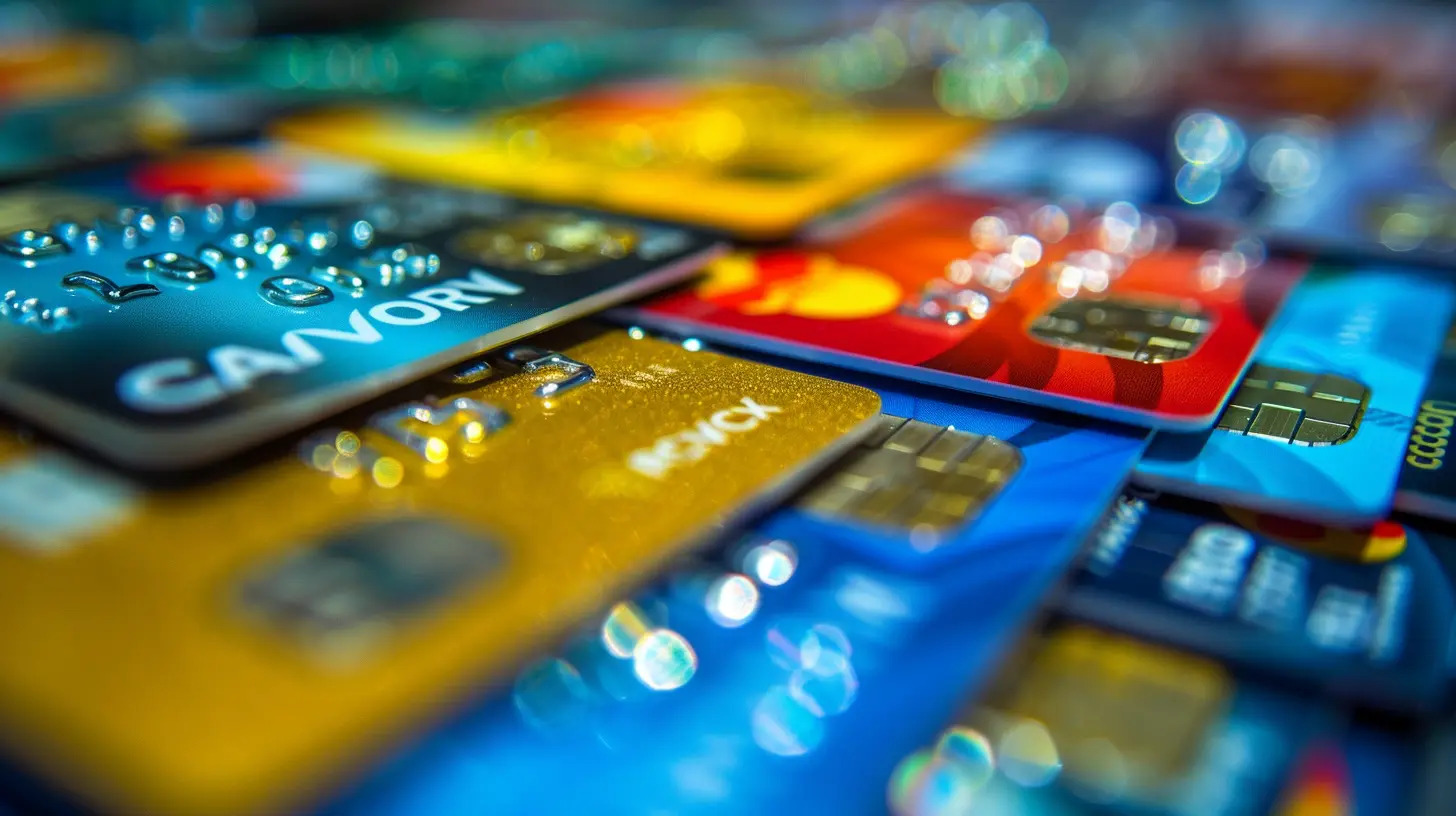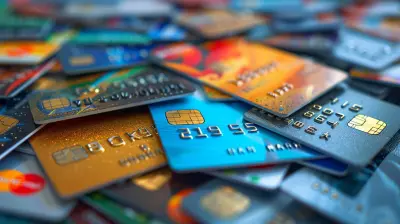Understanding the Fine Print: Maximizing Your Credit Card Rewards
3 November 2025
Credit cards have become a staple of modern financial life. They’re convenient, secure, and—when used wisely—can unlock a treasure trove of rewards. But here's the kicker: most people leave money on the table simply because they don’t understand the fine print of their rewards programs.
Are you one of them? Don’t sweat it! Today, we’re diving deep into the world of credit card rewards. We’ll unpack all the details, demystify the jargon, and give you the tools you need to maximize your rewards like a pro. Ready? Let’s get started. 
Why Credit Card Rewards Are a Game-Changer
Let’s start with the obvious question: Why should you even care about credit card rewards?Well, imagine walking into your favorite coffee shop, swiping your credit card, and earning cashback or points while sipping on that latte. Or booking a dream vacation at a fraction of the cost because your rewards footed part of the bill. It’s like getting paid to spend money you were already planning to spend.
The real power of credit card rewards comes down to one thing: strategy. The more you understand how they work, the more value you can squeeze out of them. 
Types of Credit Card Rewards
Not all credit card rewards are created equal. To maximize your earnings, you need to know your options. Here’s a breakdown of the most common types:1. Cashback Rewards
Cashback rewards are exactly what they sound like—money back in your pocket. Usually offered as a percentage of your purchases, cashback is straightforward and versatile.Example: A 2% cashback card means you earn $2 for every $100 you spend.
Pro Tip: Cashback cards are perfect for everyday spending, especially on categories like groceries, gas, or dining.
2. Points-Based Rewards
These cards let you earn points for every dollar spent. Points can typically be redeemed for things like travel, gift cards, statement credits, or merchandise.Example: A card might offer 2 points per $1 spent. Accumulate enough points, and you could score a free plane ticket or hotel stay.
Pro Tip: Be mindful of redemption rates; not all points are created equal.
3. Travel Rewards
If you’re a frequent flyer or hotel hopper, travel rewards cards are your best friend. These cards earn miles or travel points, which can be redeemed for flights, upgrades, hotels, or even vacation packages.Example: Spend $3,000 in the first three months and get 50,000 miles—it’s a common sign-up bonus for travel cards.
Pro Tip: Pair a travel card with a loyalty program (e.g., airline or hotel rewards programs) for double the benefits. 
Decoding the Fine Print
Here’s the thing about credit cards: the devil is in the details. That means paying close attention to the terms and conditions before you start swiping.1. Sign-Up Bonuses
Sign-up bonuses are like the welcome mat of credit card rewards. Spend a certain amount within a specific timeframe and unlock bonus rewards.Example: “Earn 100,000 points after spending $4,000 in the first three months.” Sounds enticing, right? But can your budget handle it?
Be Cautious: Always assess whether meeting the spending requirement will lead you to overspend.
2. Rewards Caps and Rotating Categories
Some cards impose caps on how much you can earn in specific categories or rotate the categories quarterly (e.g., groceries in Q1, gas in Q2).Example: A card might offer 5% cashback on gas but only up to $1,500 in spending per quarter.
Pro Tip: Set reminders to activate quarterly categories and always track spending caps.
3. Redemption Restrictions
Earning rewards is only half the battle—you also need to use them wisely. Some cards make it a hassle to redeem rewards, like minimum thresholds, blackout dates for travel, or limited redemption options.Pro Tip: Always choose a card with easy redemption processes and flexible rewards programs. 
Strategizing for Maximum Rewards
Now that you’ve got the basics down, it’s time to supercharge those earnings. Here are some actionable strategies to help you make the most of your credit card rewards:1. Match Your Card to Your Spending Habits
This is the golden rule of maximizing rewards. If you spend a lot on groceries, choose a card that offers higher rewards in that category. If you’re a foodie, get a dining rewards card. Tailoring your card to your lifestyle is a no-brainer.2. Leverage Multiple Cards
Here’s a pro tip: Don’t feel like you have to stick to one card. Use different cards for different spending categories to maximize rewards across the board. Just make sure to keep track of deadlines and payments.Example: Use a cashback card for groceries and a travel rewards card for flights.
3. Automate Payments
Let’s be honest; life gets busy. Automating your credit card payments ensures you never miss a due date, which means no late fees or penalty APRs. Plus, you’ll stay on top of your spending without stress.4. Focus on Sign-Up Bonuses
Sign-up bonuses can be extremely lucrative, but they require disciplined spending. If you can meet the spending requirements without going into debt, these bonuses can turbocharge your rewards balance.5. Don’t Carry a Balance
This might be the most important tip of all. Carrying a balance means paying interest, which can quickly wipe out any rewards you’ve earned. Always pay your statement balance in full every month.Pitfalls to Avoid
While credit card rewards can feel like free money, you don’t want to fall into common traps.Overspending
The allure of earning rewards can tempt you to spend more than you usually would. Remember: rewards are only valuable if they don’t lead to unnecessary debt.Ignoring Fees
A card with an annual fee can still offer value if the rewards outweigh the cost. But if you’re not using the card often, you might be throwing money away.Pro Tip: Calculate whether the benefits justify the annual fee before committing to a card.
Forgetting to Redeem Rewards
Rewards don’t always last forever. Points or miles could expire, and cashback could require redemption before a certain date.Pro Tip: Set reminders to redeem rewards periodically, and always check the expiration policy.
How Credit Card Rewards Can Impact Your Credit Score
Using rewards cards wisely doesn’t just earn you perks—it can also boost your credit score. Here’s how:1. On-Time Payments: Paying your bill on time every month builds a solid payment history, which is the most significant factor in your credit score.
2. Lower Credit Utilization: Keeping your spending below 30% of your credit limit shows lenders you’re responsible with credit.
3. Age of Accounts: Holding onto old cards can lengthen your credit history, which improves your score over time.
Final Thoughts
Maximizing your credit card rewards isn’t rocket science; it’s about understanding the fine print, matching the card to your lifestyle, and using it responsibly. Think of it like playing a game: the better you understand the rules, the higher you can score.So, next time you whip out your credit card, remember this: every swipe can bring you closer to a free flight, a big discount, or even cash in your pocket. All it takes is a little strategy, a lot of discipline, and some clever planning.
Now, go out there and start maximizing those rewards!
all images in this post were generated using AI tools
Category:
Credit Card RewardsAuthor:

Angelica Montgomery
Discussion
rate this article
1 comments
Pandora Wheeler
Great insights on credit card rewards! Understanding the fine print is crucial for maximizing benefits and avoiding potential pitfalls.
November 9, 2025 at 9:28 PM

Angelica Montgomery
Thank you! I'm glad you found the insights helpful. Understanding the fine print really is key to making the most of your rewards!


